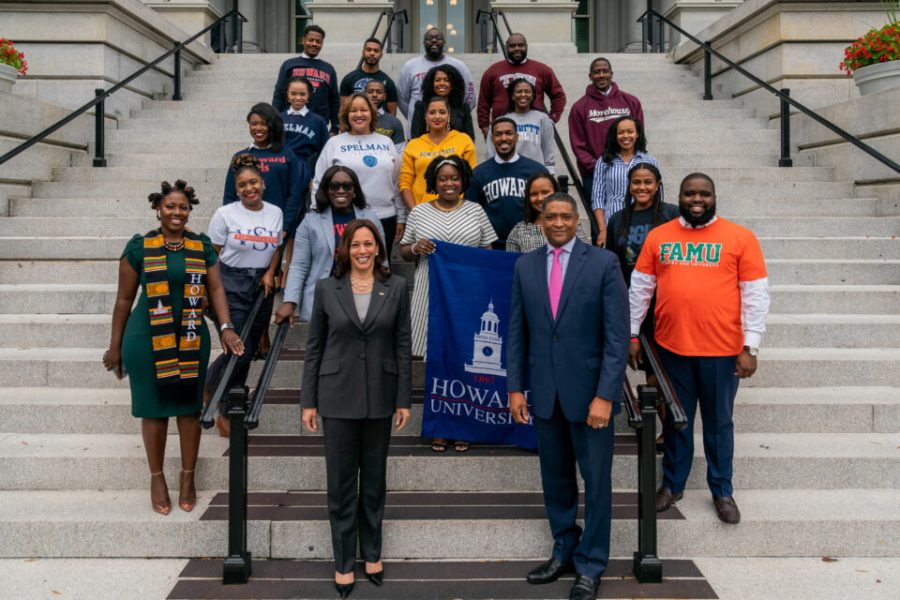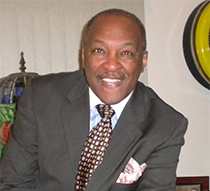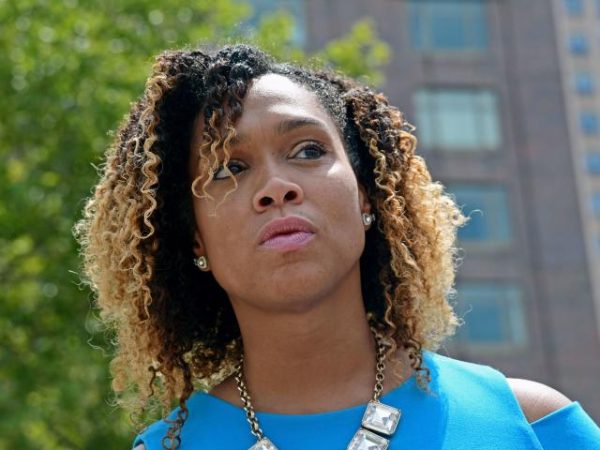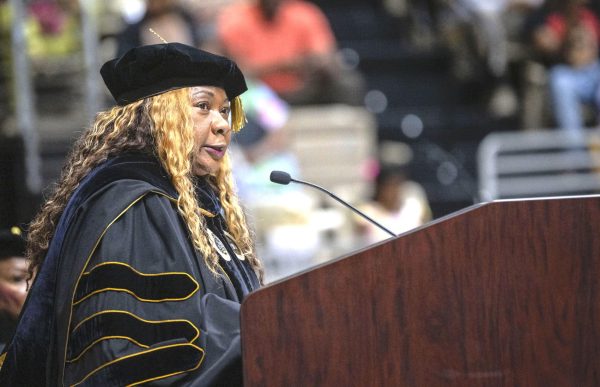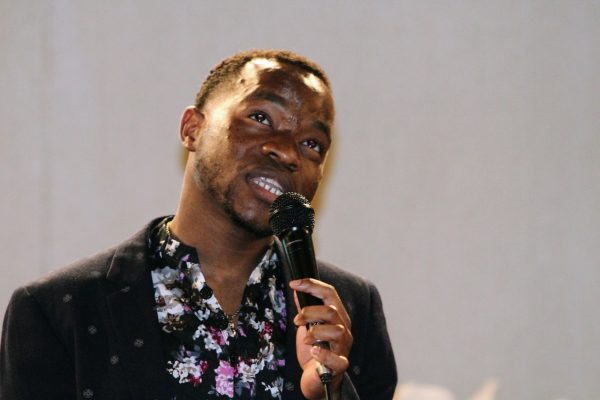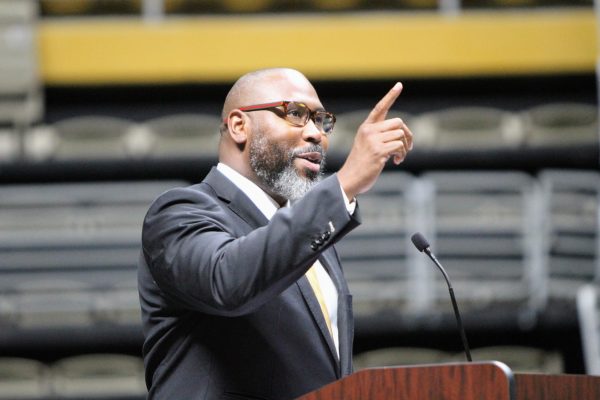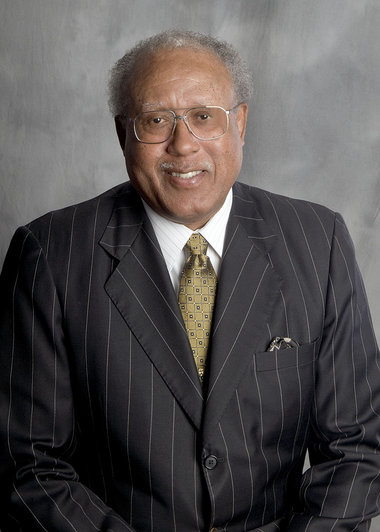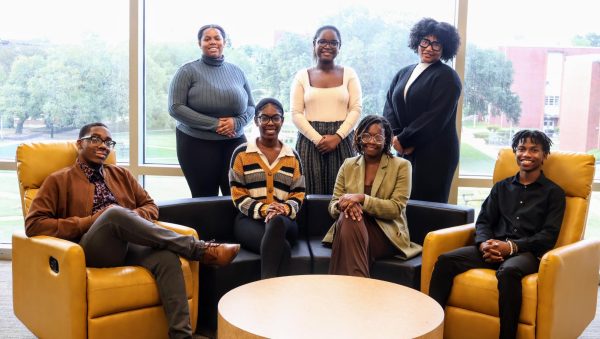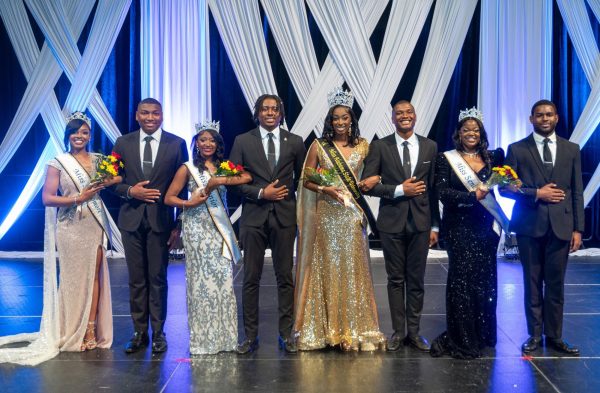Column: Democrats reduce HBCU funding from $45 billion to $2 billion
October 16, 2021
Federal funding for Historically Black Colleges and Universities (HBCUs) is dwindling right before our very eyes. President Joseph R. Biden’s Build Back Better plan was a part of a $3.5 trillion spending bill that was set to allocate $45 billion to HBCUs and other minority institutions. Unfortunately, Biden’s HBCU funding proposal was cut to $2 billion by Democratic legislators. The feeling seems all too familiar as we continue to fight the system without much avail for HBCUs.
“To see these funds literally cut in half in the new iteration was very disappointing to me,” said Roderick Smothers, Ph.D., President of Philander Smith College, a private college in Little Rock, Arkansas. The United Negro Alliance Fund cited that 37 HBCU presidents sent out a letter to Congress stating reasons for funding and how it could be utilized.
The bill was changed because of bickering between the Democratic progressives and moderates over the size of the funding package and where funding would be allocated. The lawmakers reviewed the proposal with the House Education and Labor Committee before getting cut to $2 billion. Along with this, the bill could also be changed to competitive grant funding instead of direct funding.
“Unfortunately, I wasn’t shocked by this,” said NAACP Political Action Committee Chairperson Jarrett Luter. “This is traditionally what happens.”
Luter goes on to say, “HBCUs need as much funding as possible. The students that go there are already financially strapped. That funding is not just for the university, but it’s for the benefit of the students.”
Local leaders encourage advocates to contact their state representatives and officials to make sure their voice is heard. Let them know the benefits of HBCUs and the implications of what funding and attention mean. There is a lot of power in voting that affects who dictates not only our daily lives as students but the future legacy of institutions.
Although money was cut, Dillard University President Dr. Walter Kimbrough said this is actually something they can work with. “Maybe you don’t get 50 billion. Maybe you get two or three billion, but if we normally get a billion a year, and I get three or four, that’s a big increase,” he said. “We got to push because he’s given us an opportunity now to advocate for the funds that we need. But we have to do our part to invest.”
Out of 4,000 institutions around the country, HBCUs represent 3%, and of that, 25% of undergraduate degrees come from African American students. If the country is serious about moving and dealing with issues of diversity, equity and inclusion with this racial awakening, HBCUs need to be in the conversation. It cannot be denied that HBCUs have received a boost in attention and have had a light shed on them over the past year. This attention is great, but with the spotlight on them, it is time to make the changes to the institutions that the light is exposing so brightly.
Key influential figures in the HBCU community have realized this and made action to keep the ball rolling and their feet on their necks. Smothers will continue to work with congressman French Hill and congresswoman Alma Adams, who are the co-chairs of the bipartisan task force for HBCUs. Together they organized the Institutional Grants for New Infrastructure, Technology, and Education for HBCU Excellence Act (IGNITE HBCU Excellence Act), which will increase funding to HBCUs for needed repairs to campus buildings across the country.
With the bill now cut down to $2 billion, it not only has to be shared sparingly among the 107 possible HBCUs but also the Minority Serving Institutions and Hispanic Serving Institutions. Lumping these groups together when all need immense help acts as another action of slow and small strides toward progress. Harry L. Williams, president of the Thurgood Marshall College Fund, disagrees with grouping HBCUs with minority-serving colleges and universities.
“Black colleges have a unique history, needs, and financial challenges,” he said.
HBCUs should be separated as a protected class of institutions because, like the Black community, our experience in the United States of America is a unique experience. These institutions were the first and only to accept us and make polarizing figures and leaders we get today.
In response to the decision of the lawmakers, The White House released a public statement. Published online, The Briefing Room released a fact sheet of The Biden-Harris Administration’s historical investments and support for HBCUs since their term took place that included the American Rescue Plan, grant funding, budget requests, and White House initiatives.
HBCUs have been underfunded for decades. Things such as institutional racism and the unwillingness of the federal government to fund attributed to this. Bowie State University, Coppin State University and Morgan State University sued the state of Maryland in a federal lawsuit alleging discrimination and underfunding in 2006. After a decade-plus of deliberating, all parties agreed upon a $577 million settlement this spring.
Situations like these make it draining when specific actions cannot be done for the HBCU community. The discrimination has been rampant in all areas of life for African Americans, and it is a shame that it has an embedded history in the education system. “To mix them with minority-serving institutions, which are not historic institutions that do not have the legacy of historic discrimination, is not right,” Williams said.
HBCUs struggle with funding to upgrading campuses, research programs, provide essential materials, hire teachers and attract new potential students. Because of historical underfunding, Black colleges often have built up years of deferred maintenance, leaving buildings out of compliance with local codes or otherwise unable to accommodate students. Money from endowment returns is directed to annual operating costs, making it harder to invest in new programs and buildings, a number one issue for attracting students.
It is important to address vast differences between the colleges. The AP analysis of enrollment and endowment data found wide disparities among the 107 HBCUs and a further divide between private and public institutions. Federal data showed that 11 HBCUs had endowments worth less than $1,000 per pupil in the 2018-19 school year, while nine had endowments worth more than $50,000 per pupil. In general, Black colleges have lacked the fundraising ability of other universities. The cumulative endowment for all historical Black colleges through 2019 was a little more than $3.9 billion, about the same as the endowment for just the University of Minnesota. Advocates said the funding struggles and the role the colleges have played historically is why long-term federal assistance is needed.
Last spring, Kentucky’s general assembly passed the long-awaited legislation that made it possible for Simmons College of Kentucky to have a certified teacher program. The initiative is especially meaningful to Simmons because of the state’s persistent teacher shortage and the school’s founding mission to train formerly enslaved Kentuckians as teachers. But school President Kevin Cosby said not having longer-term funding from the federal government will make it more difficult for Simmons to get the program off the ground quickly. “We need facility space, we need infrastructure, we need capital improvements, we need resources to hire teachers,” he said. “We can only thrive as institutions to the degree that we have the resources.”


